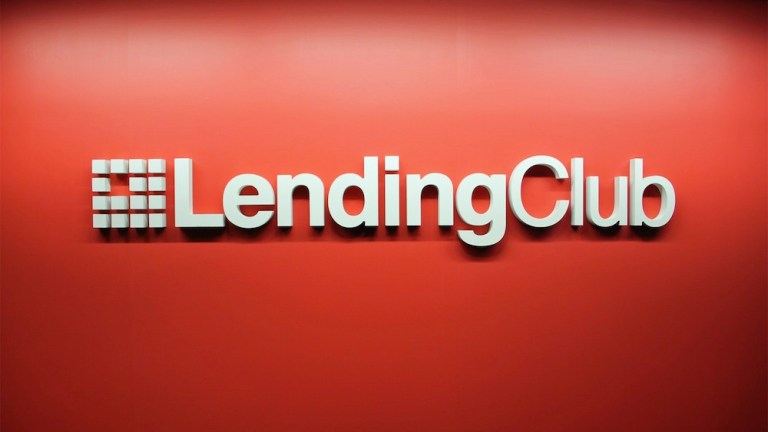
“Q2 was a busy quarter and the good thing is that it is now behind us.”
Such began Lending Club CEO Scott Sanborn’s first analyst call yesterday (August 8) as CEO.
Analysts went into the call with fairly low expectations – losses were expected.
Unfortunately for Lending Club, their expectations weren’t quite low enough – and the firm’s larger than expected losses pushed their already anemic share price down another 2.5 percent to $4.67 in after-hours trading. One year ago, Lending Club’s share price was $14.50; six months ago it was hovering around $9.
But, somber beginning aside, Sanborn is working hard to reassure analysts that the damage Lending Club suffered earlier in the year has been contained and the turnaround is underway.
“Over the past three months, we’ve been focused on re-engaging our investors and we are very pleased with our progress to-date. We believe we’ve stabilized the investor base, with 15 of our top 20 investors now back on the platform,” Sanborn noted – right before also noting, “albeit at lower investment levels.”
And those lower investment levels, paired with sagging demand and marketplace confidence, are a real problem for a lending marketplace with a business model based largely on banking origination fees and serving accounts.
So can Lending Club climb back?
By The Numbers
Second quarter losses were steep for Lending Club – with the firm reporting loss of $81.4 million, or 21 cents a share, on revenue of $103.4 million. A year ago those losses were $4.1 million (about a penny per share). Lending Club was expected to lose two cents a share on revenue of $100.5 million, according to analysts polled by Thomson Reuters.
Loan volume was also down – falling 30 percent to $1.96 billion from the previous quarter. Lending Club reported $4.4 billion in loans in assets with $35.8 million of said loans on their own balance sheet (purchased directly by Lending Club). That’s up from $23.8 million from the end of March.
Executives told analysts to expect quarterly loan volume to remain flat for the remainder of the year and that investor incentives (the higher rates offered to investors to tempt them back on to the platform) would conclude at the end of August.
“We have planned our outlook relative to the pace of investor demand with an expectation to reduce or eliminate incentives by year-end,” Sanborn said. “As a result, we expect our origination volume to be roughly flat for the next two quarters as we work to bring back banks and restructure longer-term investor acquisition costs.”
Sanborn also noted that Lending Club’s costs had been unusually high in Q2.
“We incurred a number of unusual expenses this quarter for employee retention, legal advisory fees, board review, audit, remediation and other due diligence activities,” Sanborn told investors.
“Specifically other G&A includes an additional $1.5 million in severance and retention costs and $13 million in incremental legal audit and PR fees related to the Board review and the consequences of May 9th. Adjusted EBITDA for the quarter came in at a loss of $30.1 million down from a positive $13.4 million in the prior year. Excluding the $33.9 million in unusual expenses adjusted EBITDA would have been positive at roughly $3.8 million”
In Other Bad News
Because less than wholly inspiring news likes to travel in packs, Lending Club also announced that its CFO Carrie Dolan has resigned “to pursue a new opportunity.”
The press release announcing Dolan’s departure did not note what that new opportunity is – though it did note that Ms. Dolan has been looking to pursue it for some time. Sanborn confirm in a news release that Dolan had approached Lending Club’s management in early 2016 about leaving the firm – but had agreed to remain on board until Lending Club could “navigate recent events.”
In an attempt to keep Dolan on board, Lending Club granted her $4 million in restricted stock. Stock that she will mostly never collect – as she has elected to leave in advance of it vesting.
Dolan will be replaced in the interim by principal accounting officer Bradley Coleman in the role – Coleman has also served as corporate controller since 2013. A permanent replacement search is reportedly underway.
Lending Club has also named Fannie Mae Chief Executive Timothy J. Mayopoulosto to its board. Mayopoulosto is a long time financial executive who took on the top job at Fannie May in 2012.
“His well-established industry experience, track record, integrity and deep financial and legal expertise will be invaluable to Lending Club,” Chairman Hans Morris said in a statement.
Restoring Confidence Problem
There are some early signs that investors were slowly making their way back into the Lending Club tent. It was reported last week that Lending Club and Western Asset Management Co are in negotiations to sell off $1.5 billion in Lending Club’s loans over time.
Sanborn also confirmed that the Jefferies Group – a previous defector – had revived a bond deal that had been on hold.
The investments are smaller, and the enthusiasm is dimmed, but not totally extinguished.